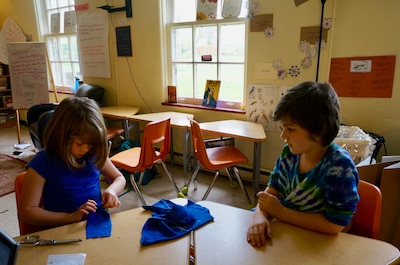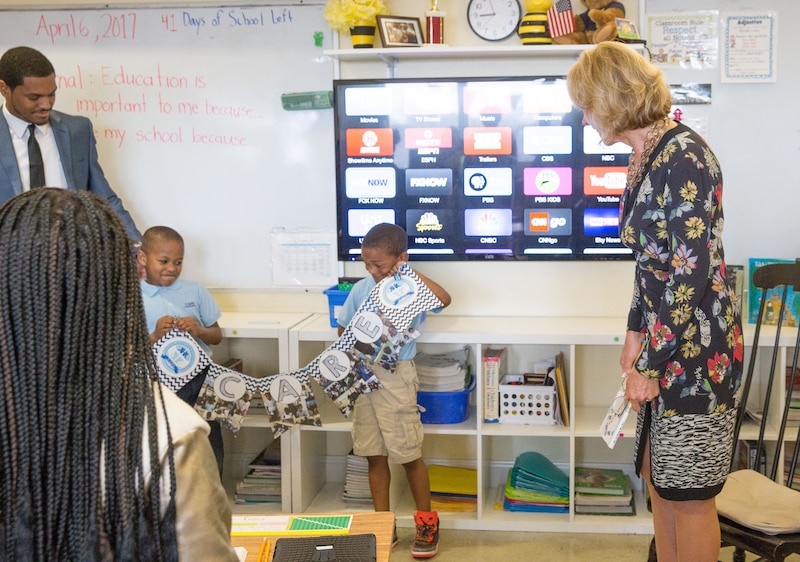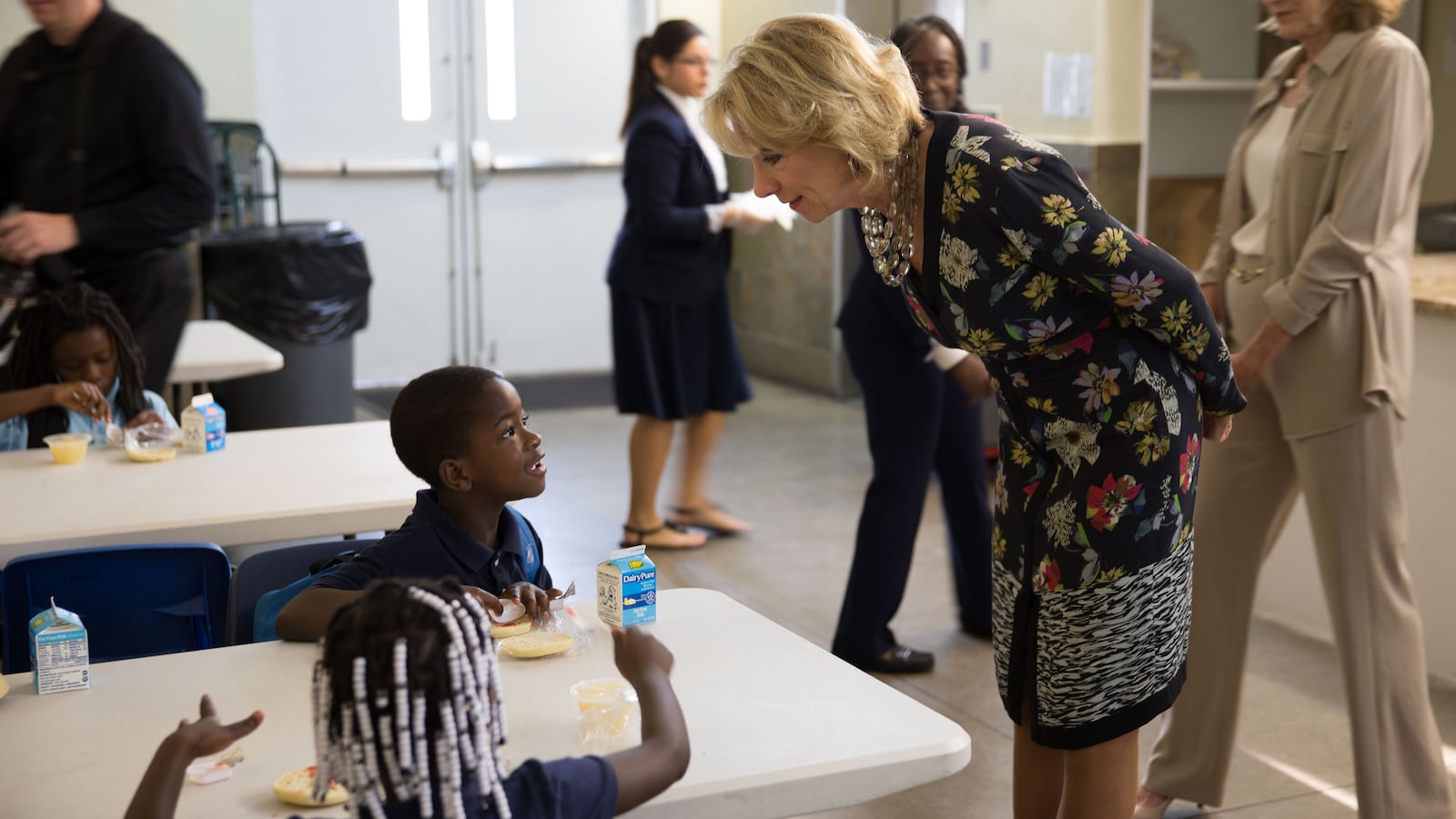Private school choice programs have exploded in the last couple years. A string of Republican-led states have launched far-reaching initiatives that allow families to use public money to access private education.
This has drawn fierce debate and raised big questions. Do vouchers raise test scores or lower them? Do they help or hurt students over the long term? Do they damage public schools or push them to improve? What will the financial impact be?
Chalkbeat combed through the academic research to get some answers.
Two caveats before we begin. First, context matters. Private school choice programs differ from place to place and have evolved. Recently passed programs have been broad based — often they’re open to all students, including those from affluent families or those who already attend private school. Prior programs were usually limited to a subset of students — say, those in low-achieving schools or those whose families are low-income. Studies have been done on some of these older programs, but not yet on the new ones. That means that prior research may be an imperfect guide for future results.
Second, the voucher debate is often about values. The recent expansion of private choice has been driven as much or more by cultural issues than questions of school performance. But research studies can’t answer philosophical questions on whether public money should go to religious schools or if providing more choices for parents is an inherent good. They can’t speak to debates about access for LGBTQ students or what type of curriculum is taught in class.
With that in mind, here’s what we know from research:
Recent studies find little evidence that school vouchers improve test scores — in fact, they’ve sometimes led to score declines. Older studies are more positive.
In the last several years, major studies in Indiana, Louisiana, Ohio, and Washington D.C. have shown that low-income students do not see improved test scores from attending private schools. If anything, students’ scores tended to decline. Choice advocates initially suggested that results would bounce back over time, but in three of the four cases achievement was worse in math, even after multiple years.
“While the early research was somewhat mixed … it is striking how consistent these recent results are,” said Joe Waddington, a University of Kentucky professor who has studied Indiana’s voucher program. “We’ve started to see persistent negative effects of receiving a voucher on student math achievement.”
In Louisiana, after four years in the program, students had substantially lower test scores in math, English, and science. The negative effects were quite large. In Indiana, students in the program saw dips in math that persisted for four years. In English, there was no meaningful change either way. The Ohio study found that “overwhelming evidence indicates a substantial negative effect on test scores of attending private schools under an EdChoice voucher” for the subset of students they were able to study.
Data in D.C. tells a different story, though. Students’ math test scores fell two years into the program, but by year three they had recovered. Overall, vouchers had no clear effect on test scores. Students who used a voucher were less likely to be chronically absent from school, a positive outcome.
What’s different about D.C.? It’s not clear, but one possibility is that other programs were evaluated with state tests that have higher stakes for public than private schools. In D.C., the researchers used a different national exam. Some argue that using state tests gives public schools an unfair leg up.
These more recent papers differ from older research on private school choice. Prior studies tended to show a mix of positive and null results. It’s not clear what has changed, but one theory is that public schools have improved — or at least gotten better at raising test scores — in response to accountability measures like No Child Left Behind.
It’s worth reiterating that these studies typically focused on choice programs that are targeted at low-income students, which is quite different from newer voucher initiatives.

Studies show that school vouchers have a neutral or positive impact on student outcomes later in life.
A different way of looking at private school choice is to track students over time — are they more likely to complete high school or attend college, for instance? Some school choice advocates say this, rather than test scores, is a better gauge of program effectiveness. There are fewer studies on this, but what exists is more favorable for private school choice: There are a combination of positive and zero effects, and no indication of negative effects.
For instance, one study of Milwaukee’s long-running voucher program found that participants were more likely to graduate high school and attend four-year colleges. A recent follow-up study confirmed these results, but found that vouchers had no clear effect on students’ likelihood of completing college.
A 2010 federal analysis of the D.C. voucher program found that its students were 21 percentage points more likely to complete high school (according to a survey of their parents, not a direct measure of graduation). But a follow-up analysis found that voucher recipients were no more or less likely to enroll in college.
A private school scholarship program in New York did not lead to improvements in college enrollment on average, but did seem to have a positive effect for Black students specifically. A later study of the same program also found no overall effects, but some benefits for “moderately disadvantaged” students.
In Florida, a 2017 study and 2019 follow-up found that its tax credit program led to small increases in college enrollment and degree completion. Specifically, 12% of students who went to a private high school using a tax credit grant earned a bachelor’s degree; that compares to 10% among demographically similar students in public schools.
Keep in mind: There are only a handful of studies available on long-term outcomes. Researchers also had to look at students who entered voucher programs many years ago — a necessary trade-off when examining long-term outcomes. What will the long-term effects be for programs that had negative impacts on test scores? That’s not clear.
There is one helpful data point on this question. A study of Louisiana’s program — the one that initially showed big declines in test scores for elementary and middle school students — found that it did not have any clear effect on college enrollment among older students.
Attending a private school may improve parent or student satisfaction.
There’s some evidence that families tend to be more satisfied with private schools. For instance, an older D.C. study showed that parents who won a voucher gave their schools higher marks. There was no difference for students though. The latest D.C. analysis found the reverse — parents were no more satisfied with private schools, but students were. Voucher students gave their private schools higher ratings and perceived them as safer. An analysis of national data showed that private-school parents generally were more satisfied with their child’s education than those sending their children to public schools. “Whether students enrolled in their choice program through lottery or self-sorted into their private school of choice, the results have shown that providing choice in education leads to higher levels of parent satisfaction,” concluded one overview study.

Research on prior programs suggests that vouchers lead to small improvements in public schools.
There is a large body of evidence suggesting that public schools get slightly better in response to competition from school vouchers, at least as measured by test scores.
This has been seen in studies of Florida, Louisiana, Milwaukee, Ohio, San Antonio, and even Canada. As one research overview put it, “Evidence on both small-scale and large-scale programs suggests that competition induced by vouchers leads public schools to improve.”
The impact is usually small and may vary depending on the program.
A study in Louisiana, for instance, found some evidence that vouchers boosted math scores in public schools, but they didn’t seem to have any effect on reading scores. Another recent study in Florida found more consistent impacts: Tax credit–funded vouchers led to small improvements in math and reading test scores, as well as suspension and attendance rates. Effects were largest for lower-income students.
Again, however, these studies tend to focus on more targeted voucher programs rather than the universal programs that are currently spreading — and those could have very different effects on public schools.
Targeted school voucher programs may not be costly, but universal programs probably will be.
A key factor driving the costs of choice programs is whether a student would have attended a public school if they didn’t have access to a voucher. In that case, the added cost may be small. After all, public dollars would fund that child’s education either way. Some choice advocates have produced analyses concluding that private school choice would actually save money because vouchers are typically funded at a lower rate than public schools.
But if a large share of voucher recipients would have attended private school on their own dime, the cost calculations change. That seems likely to happen with universal programs. In that case, students’ education that had been privately funded is now being publicly funded. That increases costs. Arizona, which passed a universal private school choice law in 2022, has seen the program’s projected cost this year jump from $33 million to $276 million. (There’s also some evidence that universal programs will lead private schools to raise their tuition.)
“By making choice scholarships quickly available to non-public school student populations with little incentive not to take the taxpayer funds, universal school choice programs have … higher up-front costs for governments and, thus, taxpayers,” wrote Christian Barnard, an analyst with the libertarian-leaning Reason Foundation, which supports school choice. Ultimately, the price tag and how it’s paid for will depend on the state and the voucher program’s design. If there are major added costs, policymakers will have to decide how to pay for them — whether through higher taxes or by providing less money to public schools or other public services.
It’s worth keeping this in mind alongside the above section suggesting that private school competition improves public schools. If new programs lead to less funding for public schools, that could negate any benefits from competition.
School voucher programs targeted at low-income students are not likely to increase racial segregation — but larger-scale programs might.
Although there is limited research on the effects of private school choice programs on segregation, existing studies have not found that voucher programs targeted at low-income students worsen segregation. A study in Louisiana found vouchers led to slightly more racial integration, while an older analysis of Milwaukee showed no impact.
However, there is reason to think that larger-scale voucher programs open to families regardless of income could exacerbate segregation. For instance, research on charter schools, a universal choice option, has found that they lead to modest increases in racial and economic segregation.
This article has been updated from its original version in 2017.
Matt Barnum is a national reporter covering education policy, politics, and research. Contact him at mbarnum@chalkbeat.org.


